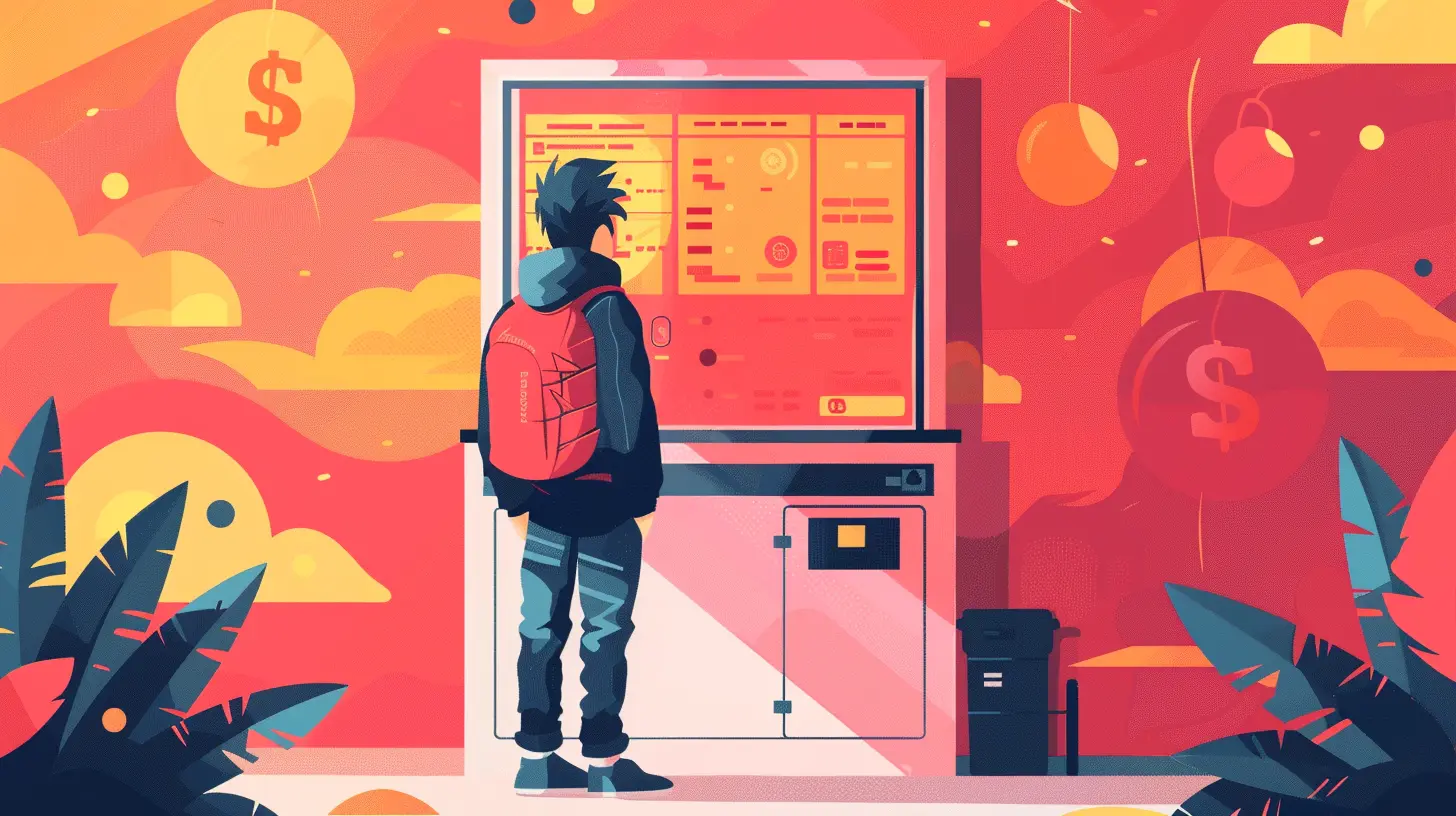How Changing Interest Rates Can Alter Investment Strategies for Millennials
10 August 2025
Interest rates might sound boring at first glance—just numbers set by some central bank, right? But hang tight, because these little numbers pack a serious punch when it comes to shaping your financial life. If you’re a millennial trying to figure out how to grow your money, understanding how interest rates impact your investments isn’t just helpful—it’s essential.
So, why should you care? Because interest rates are basically like the mood ring of the economy. When they shift, everything from your mortgage to your stocks to your savings account gets affected. And if you want to keep up (or get ahead), you’ve got to tweak your game plan accordingly.
Let’s dive deep into how changing interest rates can flip traditional investment strategies on their heads—and how you, as a millennial, can stay one step ahead.
What Exactly Are Interest Rates?
Before we get tactical, let’s decode the basics.At its core, an interest rate is the cost of borrowing money. Think of it like the “rental fee” you pay to use someone else’s cash—whether it's a bank charging you on a loan or paying you a little extra for keeping your money in a savings account.
The Federal Reserve (in the U.S.) or your own country’s central bank sets a benchmark interest rate, and from there, it trickles down into our daily lives: affecting loans, credit cards, mortgages, savings yields—and, yes, investments.
Why Millennials Should Pay Close Attention
Millennials are in a unique spot. Most of us (yes, I’m one too!) have lived through a few crazy financial chapters—2008’s Great Recession, the student debt boom, the crypto rollercoaster, and let's not forget the economic chaos caused by the pandemic.Now that a lot of millennials are earning more, facing serious life expenses (kids, homes, retirement plans), and looking to grow their wealth, understanding how to adapt investment strategies to rising or falling interest rates is non-negotiable.
How Interest Rates Affect Different Types of Investments
Let’s break it down. Different investments react differently to rate changes. Knowing how they behave when interest rates go up or down can help you stay ahead of the curve.📉 1. Stocks: The Market's Mood Swings
You’d think stocks are disconnected from interest rates—but they’re not.- When interest rates rise, borrowing becomes more expensive for companies. That can squeeze their profits and potentially lead to lower stock prices. Plus, investors might jump ship from risky stocks to safer, interest-bearing assets like bonds.
- When rates fall, it’s usually good news for stocks. Cheap borrowing can fuel business expansion and investor appetite for riskier plays increases.
💡 Millennial tip: In high-interest environments, consider shifting toward high-quality companies (think strong balance sheets, low debt) rather than speculative tech stocks.
💵 2. Bonds: Not as Boring as You Think
Here’s the weird part: when interest rates go up, bond prices go down. Why? Because existing bonds paying lower interest look less attractive compared to new ones offering higher yields.- Rising rates = falling bond prices
- Falling rates = rising bond prices
💡 Millennial tip: If you’re holding long-term bonds in a rising rate world, you might want to reconsider. Short-term or floating-rate bonds can offer more stability.
🏠 3. Real Estate: The Mortgage See-Saw
Interest rates and real estate are like dance partners—one moves, the other follows.- Higher rates make mortgages more expensive, potentially cooling home prices and lowering demand.
- Lower rates mean cheaper mortgages, which can juice the market and push prices higher.
💡 Millennial tip: If you’re eyeing a home purchase, rate trends could change your timeline. Rising rates might make locking in a lower rate now smarter than waiting.
📈 4. Savings Accounts & CDs: Finally, Some Good News?
Let’s be honest—savings accounts were a joke for years. But when interest rates climb, traditional saving vehicles start to look better.💡 Millennial tip: Rising rates mean your emergency fund could finally earn something. Look for high-yield savings accounts or better CD deals.
Strategic Shifts Millennials Should Consider
Now that we know how rate changes echo across investments, it’s time to talk strategy. When the economic winds shift, your sails should too. Here are some smart moves to keep in mind:🔄 1. Reevaluate Risk Tolerance
Ask yourself: can I stomach more volatility? If interest rates are rising, investing in high-risk, growth stocks might suddenly seem less attractive. It could be time to diversify into more stable sectors like utilities or consumer staples.🧩 2. Diversify Like a Pro
Don’t put all your eggs in crypto or meme stocks. Rising or falling interest rates hit different sectors in different ways. A diversified portfolio means you’re spreading your risk, not betting it all on a single outcome.🛡️ 3. Consider Defensive Stocks
Some industries—think healthcare, food, essential services—are less sensitive to interest rate hikes. These are known as “defensive stocks,” and they can provide a cushion in rocky times.💡 Millennial tip: If you’re rebalancing your portfolio, adding a dose of these can provide much-needed stability.
🧮 4. Stay Liquid When Uncertain
If interest rates are unpredictable, having some cash on the sidelines isn’t the worst idea. You can jump on opportunities (like buying the dip) without having to sell off assets at a loss.📊 5. Consider Value Over Growth
In lower-rate environments, investors love growth stocks with big potential. But when rates rise, the attention tends to swing toward value stocks—companies that are profitable today, not just promising for tomorrow.💡 Millennial tip: Shift part of your investing focus to undervalued, dividend-paying stocks that offer actual returns in the near term.
Common Mistakes Millennials Make
Okay, real talk—millennials are smart, but that doesn’t mean we’re immune to missteps. Here are some interest rate-related investing mistakes you absolutely want to avoid.❌ 1. Not Understanding Compound Interest
High-interest savings? Great. High-interest credit card debt? Not so much. Compound interest can either build your wealth or drain it, depending on which side of it you’re on.❌ 2. Chasing Trendy Investments Without Context
Just because a Reddit thread said "buy now" doesn’t mean it’s wise. Especially in changing rate environments, trendy investments can crash fast.❌ 3. Ignoring Inflation
Higher interest rates often come with higher inflation. If your investments aren’t keeping pace, your money’s losing value in real terms.What to Watch Going Forward
Interest rates don’t stay static for long. As economic conditions change, central banks adjust rates to combat inflation, stimulate growth, or keep things stable. These changes ripple through the financial world—and directly impact your investment strategy choices.Here’s what you should keep your eye on:
- Inflation data: Rising inflation usually means rate hikes.
- Fed meetings: When the Federal Reserve speaks, markets listen. You should too.
- Job reports & economic indicators: These help signal where the economy—and interest rates—might head next.
Tools and Resources Every Millennial Investor Should Use
Navigating the interest rate jungle might seem daunting, but thankfully, you don’t have to go it alone. There are plenty of tools and resources to help you stay informed and make smarter moves.- Investment apps like M1 Finance, Fidelity, or Robinhood: Great for tracking your portfolio and executing shifts.
- Economic calendars (like on Investing.com): Stay ahead of Fed decisions and key economic data releases.
- Financial podcasts and YouTube channels: Follow trusted voices that break things down in simple, relatable terms.
💡 Pro Tip: Set Google alerts for “interest rate changes” or “Fed announcements” so you never miss a beat.
Final Thoughts: Adapt and Thrive
Let’s face it—interest rates are one of those back-end levers that silently shape our whole financial world. As a millennial investor, ignoring them is like driving blindfolded. But once you understand how they work (and how to pivot your investments around them), you’ll have a superpower most people overlook.Changing interest rates don’t mean panic—they signal opportunity. You just have to know where to look, and how to shift your sails. Whether you’re a seasoned investor or just getting started, staying agile and informed will be your best strategy in any rate environment.
So the next time you hear “the Fed is raising rates,” you won’t roll your eyes. You’ll start thinking about how to make your next smart money move.
all images in this post were generated using AI tools
Category:
Interest Rates ImpactAuthor:

Yasmin McGee
Discussion
rate this article
1 comments
Harper Peterson
Adapt strategies, seize opportunities.
September 2, 2025 at 3:31 AM

Yasmin McGee
Absolutely! Adapting strategies and seizing opportunities is crucial for millennials navigating fluctuating interest rates to maximize their investments.


